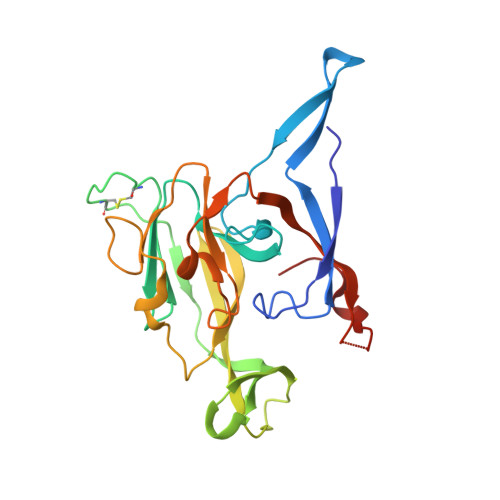Crystal structure of a bacterial signal peptidase in complex with a beta-lactam inhibitor.
Paetzel, M., Dalbey, R.E., Strynadka, N.C.(1998) Nature 396: 186-190
- PubMed: 9823901
- DOI: https://doi.org/10.1038/24196
- Primary Citation of Related Structures:
1B12 - PubMed Abstract:
The signal peptidase (SPase) from Escherichia coli is a membrane-bound endopeptidase with two amino-terminal transmembrane segments and a carboxy-terminal catalytic region which resides in the periplasmic space. SPase functions to release proteins that have been translocated into the inner membrane from the cell interior, by cleaving off their signal peptides. We report here the X-ray crystal structure of a catalytically active soluble fragment of E. coli SPase (SPase delta2-75). We have determined this structure at 1.9 A resolution in a complex with an inhibitor, a beta-lactam (5S,6S penem), which is covalently bound as an acyl-enzyme intermediate to the gamma-oxygen of a serine residue at position 90, demonstrating that this residue acts as the nucleophile in the hydrolytic mechanism of signal-peptide cleavage. The structure is consistent with the use by SPase of Lys 145 as a general base in the activation of the nucleophilic Ser90, explains the specificity requirement at the signal-peptide cleavage site, and reveals a large exposed hydrophobic surface which could be a site for an intimate association with the membrane. As enzymes that are essential for cell viability, bacterial SPases present a feasible antibacterial target: our determination of the SPase structure therefore provides a template for the rational design of antibiotic compounds.
Organizational Affiliation:
Department of Biochemistry and Molecular Biology, University of British Columbia, Vancouver, Canada.
















